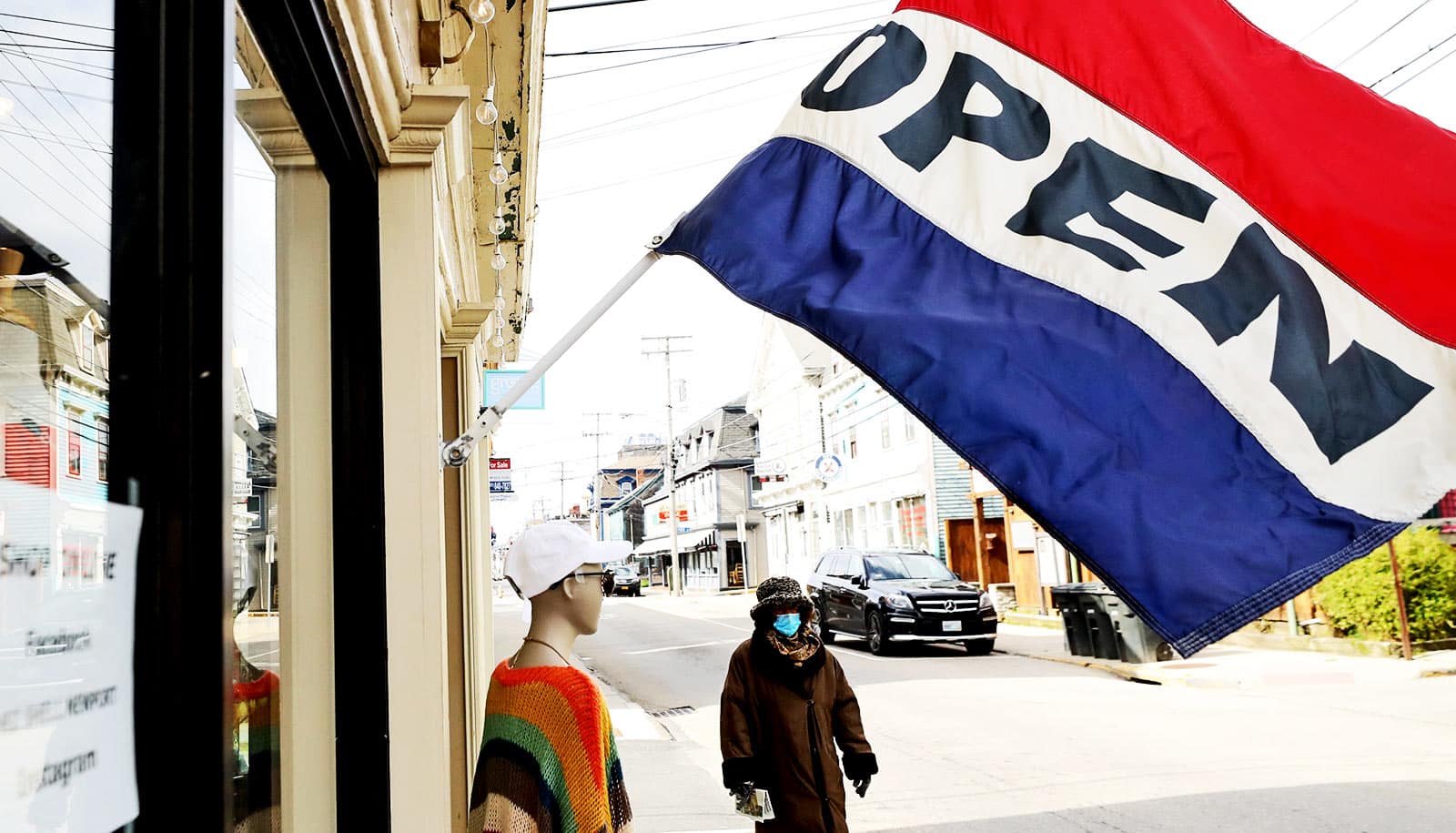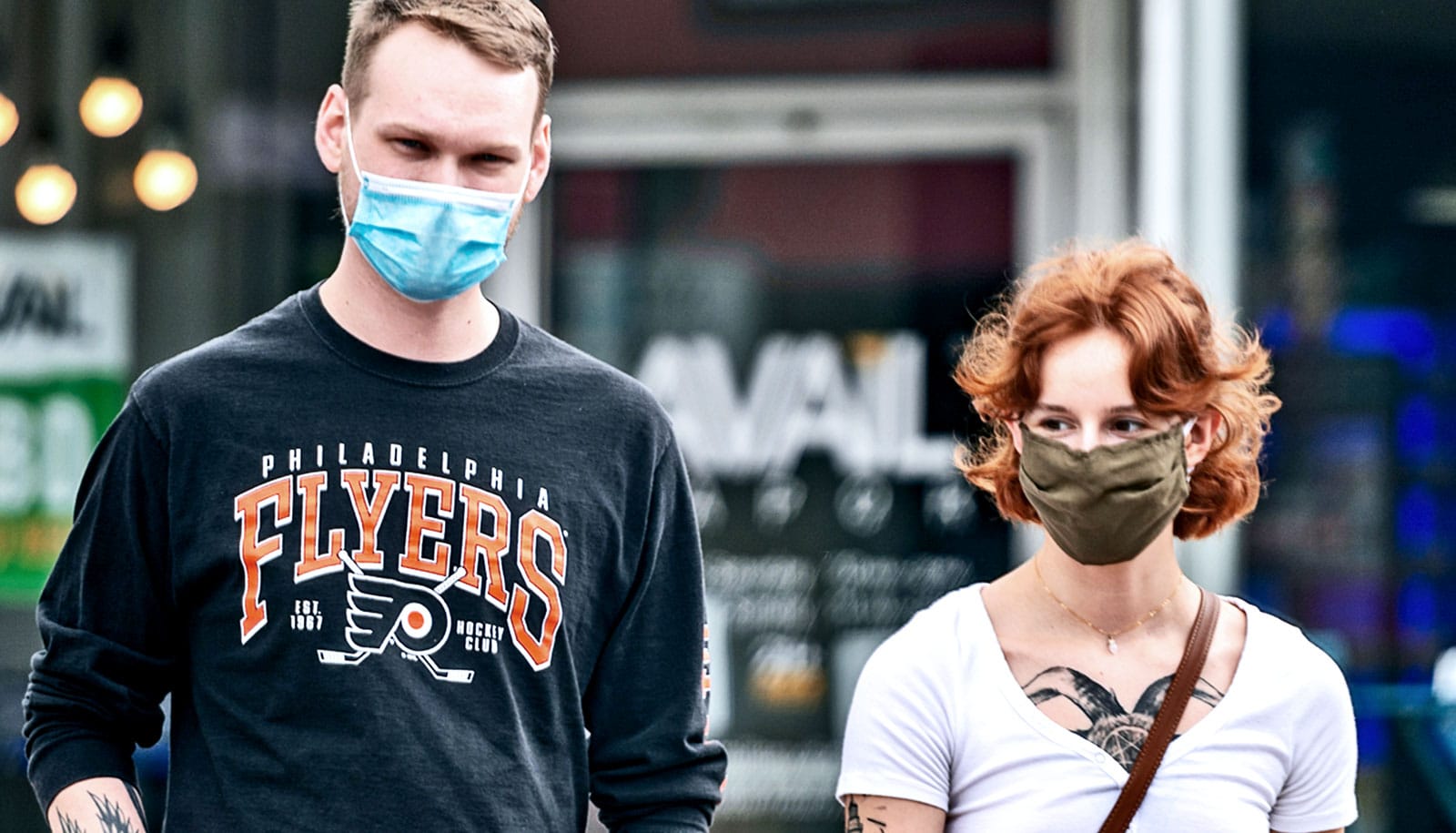States eased COVID-19 restrictions based on politics as much as death rates or case counts, a new study shows.
In the first month of the COVID-19 pandemic, nearly all 50 states announced restrictions on gatherings and businesses, and most issued stay-at-home orders, aiming to curb disease transmission and avoid overburdening health systems.
States with Republican governors and a larger vote share for Donald Trump in 2016 eased their restrictions two weeks earlier than states with Democratic governors and smaller Trump vote shares, all else equal.
“The push by Trump to politicize social distancing policy came at a critical time,” says lead author Christopher Adolph, a professor of political science at the University of Washington. “In April 2020, cases were still very high in many states. Many Republican governors pulled the trigger on easing too early.”
The researchers also found that states with large Black communities, despite those communities being hit hardest by the pandemic, also lifted restrictions earlier.
There was a “near-immediate politicization of this public health crisis,” the authors write in the new paper in the journal Perspectives on Politics, exacerbated when then-President Trump declared that statewide lockdowns and business closures were a greater threat to the economy than the virus.
Politics of COVID-19 restrictions
The new study looked at when states eased five policies, beginning in mid-April 2020: stay-at-home orders; limits on gatherings; closures of nonessential businesses such as gyms and movie theaters; and restrictions on the operation of restaurants and bars. In all five categories, researchers found that Republican-led states eased restrictions on indoor activity earlier than Democratic-led ones, but by early July 2020, all states had eased at least one social distancing policy.
The team analyzed those moves taking into account other factors—health indicators such as COVID-19 deaths, confirmed cases, and test positivity rates, along with other variables such as governor’s political party, Trump’s share of the vote in 2016, state population density, and some demographic characteristics.
Public health indicators did play a role, the researchers point out, as states with better trends in epidemiological indicators could be expected to ease restrictions two weeks (an average of 14.1 days) ahead of states where trends in case counts and deaths were worsening or improving more slowly.
But the influence of COVID-19 trajectories was slightly less than that of the governor’s political party and the share of Trump voters. All else equal, states with a Republican governor and a majority of Trump voters could be expected to begin easing restrictions just over two weeks (an average of 14.5 days) ahead of Democratic-led states.
“Since March 2020, state-level decisions on the response to COVID-19 have been influenced by politics as much as—and sometimes more than—public health data and evidence on evolving pandemic needs. In the US, this has happened for social distancing measures, mask policies, vaccination and testing requirements, travel restrictions—everything,” says coauthor Bree Bang-Jensen, a doctoral candidate in political science.
Effects on Black communities
The authors warn that polarized politics could further hinder how future public health emergencies are handled in the United States. For instance, following the initial loosening of social distancing restrictions, COVID-19 cases and deaths rose in many states. Yet a fragmented approach toward COVID-19 continued through the summer and fall of 2020, culminating in a devastating winter surge and deepening partisan divisions.
“Public health inherently involves political considerations and trade-offs, so completely divorcing politics from public health decision-making and policy implementation isn’t really an option,” says coauthor Nancy Fullman, a doctoral student in global health.
“Instead, we should recognize how public health policy and practice occur within existing political environments, and actively work within those systems to ensure strong science and timely data can inform decisions.”
The team also analyzed the association between the loosening of restrictions and a state’s Black population, given the disproportionate impact of COVID-19 on Black communities and other communities of color. Indeed, states with larger percentages of their population identifying as Black saw COVID-19 social distancing policies eased nearly a week (an average of 6.7 days) earlier than states with a smaller Black population—a finding that may mirror patterns of systemic racism and enduring neglect toward Black communities in the US.
“The COVID-19 pandemic continues to exact an uneven toll for individuals and communities, especially people of color and frontline workers who face higher exposure to the virus. Each decision to reduce COVID-related protections places already marginalized groups at risk, and needs to be made very carefully. This was true in 2020, and it remains true today,” Adolph says.
The study is the latest from the University of Washington COVID-19 State Policy Project, led by Adolph. Last year, the team published papers on the influence of politics on social distancing policies and mask mandates and, like the latest research, found that a governor’s political party was a key driver in what are ostensibly public health decisions.
Additional coauthors are from the University of Toronto and the University of Washington. The Benificus Foundation and the University of Washington Center for Statistics and the Social Sciences funded the work.
Source: University of Washington



